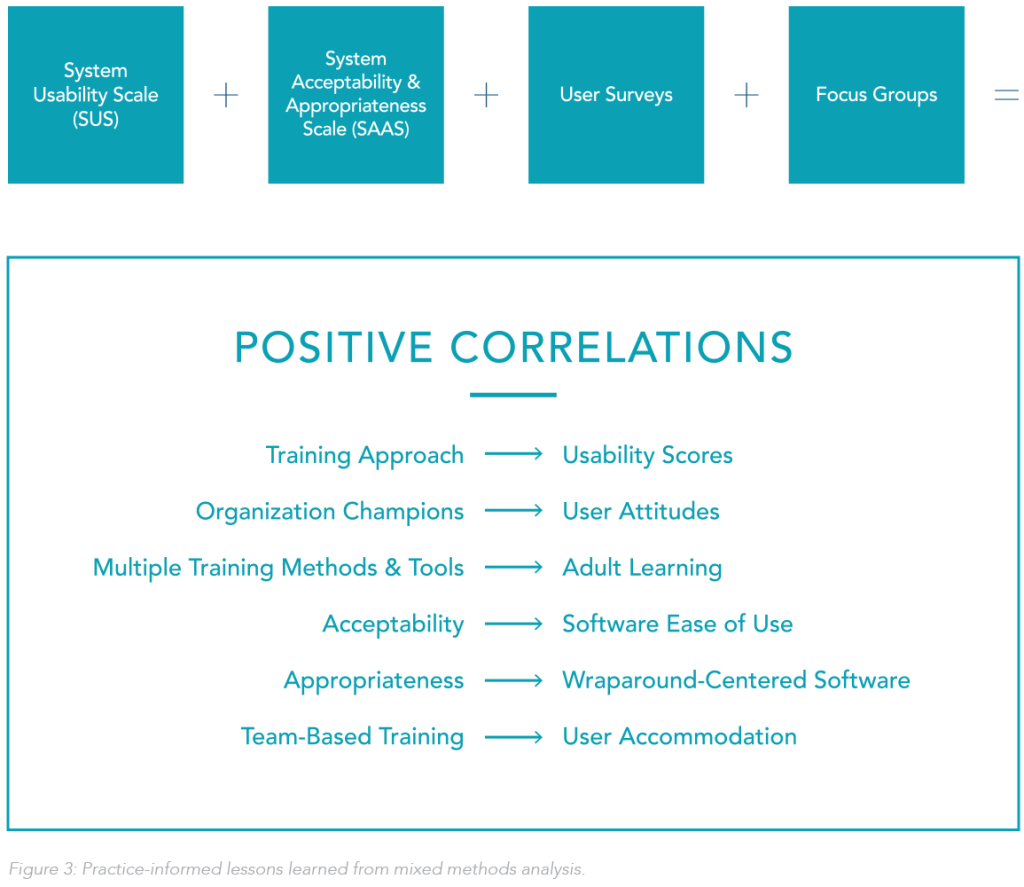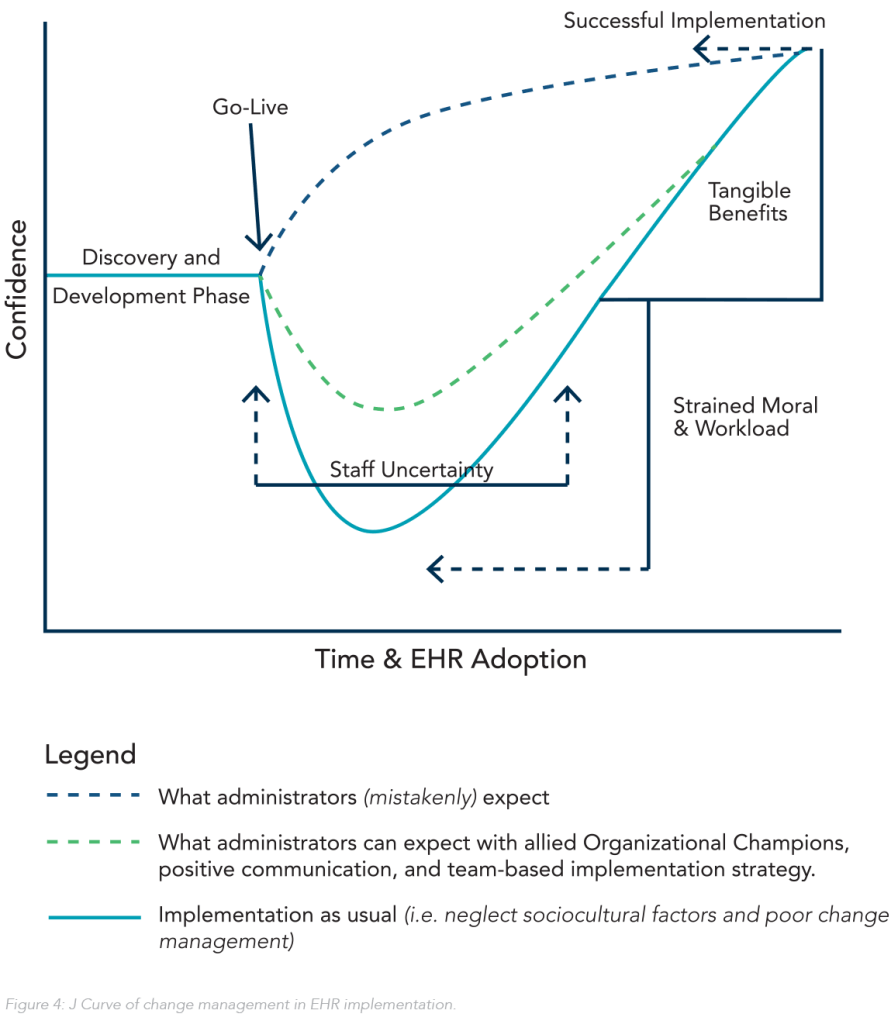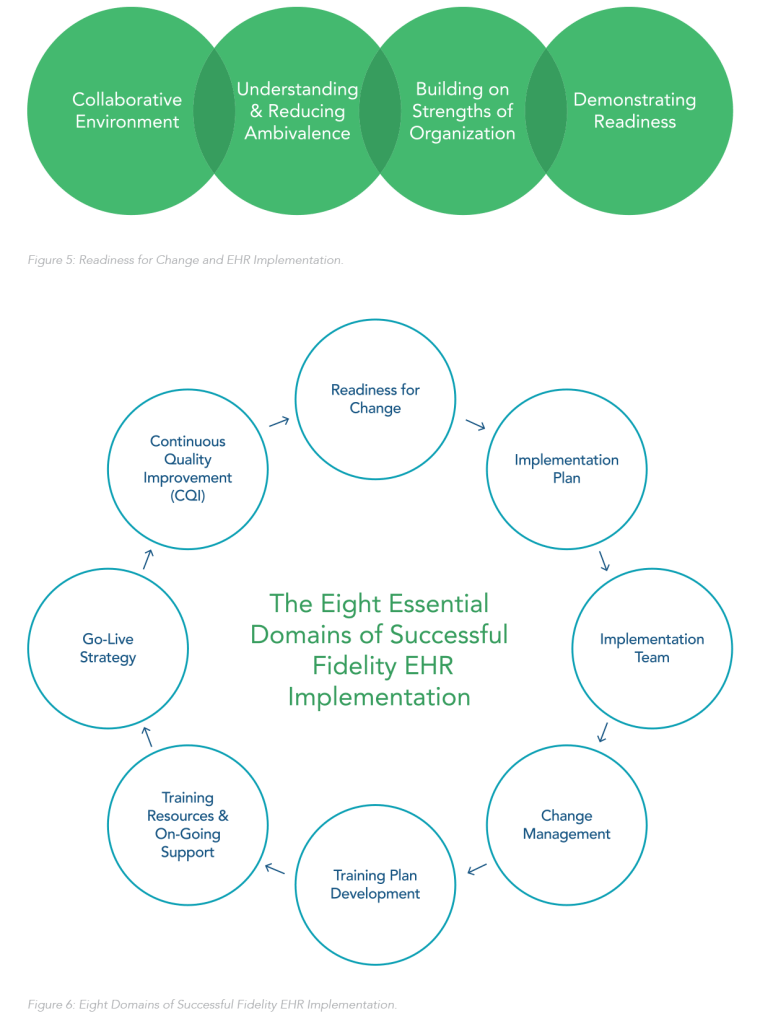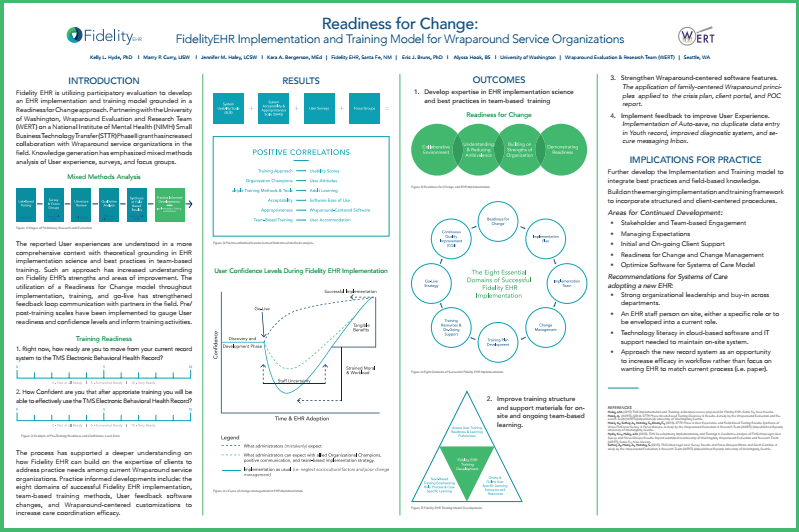FidelityEHR Presents Poster at the 29th Annual Research & Policy Conference on Child, Adolescent and Young Adult Behavioral Health in Tampa, FL
Readiness for Change: FidelityEHR Implementation and Training Model for Wraparound Service Organizations
Authors: Kelly L. Hyde, PhD | Marry P. Curry, LISW | Jennifer M. Haley, LCSW | Kara A. Bergerson, MEd | FidelityEHR, Santa Fe, NM | Eric J. Bruns, PhD | Alyssa Hook, BS | University of Washington | Wraparound Evaluation & Research Team (WERT) | Seattle, WA
INTRODUCTION
Fidelity EHR is utilizing participatory evaluation to develop an EHR implementation and training model grounded in a Readiness for Change approach. Partnering with the University of Washington, Wraparound Evaluation and Research Team (WERT) on a National Institute of Mental Health (NIMH) Small Business Technology Transfer (STTR) Phase II grant has increased collaboration with Wraparound service organizations in the field. Knowledge generation has emphasized mixed methods analysis of User experience, surveys, and focus groups.
Mixed Methods Analysis

The reported User experiences are understood in a more comprehensive context with theoretical grounding in EHR implementation science and best practices in team-based training. Such an approach has increased understanding on Fidelity EHR’s strengths and areas of improvement. The utilization of a Readiness for Change model throughout implementation, training, and go-live has strengthened feedback loop communication with partners in the field. Pre/post-training scales have been implemented to gauge User readiness and confidence levels and inform training activities.
Training Readiness
1. Right now, how ready are you to move from your current record system to the TMS Electronic Behavioral Health Record?

2. How Confident are you that after appropriate training you will be able to effectively use the TMS Electronic Behavioral Health Record?

The process has supported a deeper understanding on how Fidelity EHR can build on the expertise of clients to address practice needs among current Wraparound service organizations. Practice informed developments include: the eight domains of successful Fidelity EHR implementation, team-based training methods, User feedback software changes, and Wraparound-centered customizations to increase care coordination efficacy.
RESULTS

User Confidence Levels During Fidelity EHR Implementation

OUTCOMES
- 1. Develop expertise in EHR implementation science and best practices in team-based training

2. Improve training structure and support materials for onsite and ongoing team-based learning.

3. Strengthen Wraparound-centered software features.
The application of family-centered Wraparound principles applied to the crisis plan, client portal, and POC report.
4. Implement feedback to improve User Experience.
Implementation of Auto-save, no duplicate data entry in Youth record, improved diagnostic system, and secure messaging Inbox.
IMPLICATIONS FOR PRACTICE
Further develop the Implementation and Training model to integrate best practices and field-based knowledge.
Build on the emerging implementation and training framework to incorporate structured and client-centered procedures.
Areas for Continued Development:
- Stakeholder and Team-based Engagement
- Managing Expectations
- Initial and On-going Client Support
- Readiness for Change and Change Management
- Optimize Software for Systems of Care Model
Recommendations for Systems of Care adopting a new EHR:
- Strong organizational leadership and buy-in across departments.
- An EHR staff person on site, either a specific role or to be enveloped into a current role.
- Technology literacy in cloud-based software and IT support needed to maintain on-site system.
- Approach the new record system as an opportunity to increase efficacy in workflow rather than focus on wanting EHR to match current process (i.e. paper).
References:
Haley, J.M. (2015) TMS Implementation and Training. A literature review prepared for Fidelity EHR. Santa Fe, New Mexico.
Hook, A. (WERT). (2014). STTR Phase II: Lab-Based Testing Overview & Results. A study by the Wraparound Evaluation and Research Team (WERT) (Unpublished). University of Washington, Seattle.
Hook, A., Sather, A., Hensley, S., Bruns, E., (2015). STTR Phase II User Experience and Field-Based Testing Results. Synthesis of Wrap-TMS User Survey & Focus Groups. A study by the Wraparound Evaluation & Research Team (WERT). (Unpublished Report). University of Washington, Seattle.
Hyde, K.L., Haley, J.M. (2015). TMS Development, Implementation, and Training: A Qualitative Analysis of TMS-WrapLogic User Survey and Focus Groups Results. Report submitted to University of Washington, Wraparound Evaluation and Research Team (WERT), Santa Fe, New Mexico.
Sather, A., Hook, A., Hensley, S. (2015). TMS-WrapLogic User Survey Results and Focus Groups: Illinois and South Carolina. A study by the Wraparound Evaluation & Research Team (WERT). (Unpublished Report). University of Washington, Seattle.

